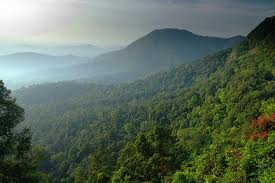the beach paradise in Goa

Goa, an endearing abode of scenic charm is a paradise, squeezed between the seas and the lush forested hills. Offering glistening sands, swaying coconut palms, and ultra fresh seafood. Your Goa Tours will involve exploring sensuous beaches and historical forts that have kept the legacy of Portuguese alive. Travel to Goa, to explore the mystical charisma of the exotic abode. Let's make your holiday to Goa even better by taking you to the upmarket locales of North Goa, which boasts of gleaming seas and golden sands.

The beaches in South Goa are an ideal destination for honeymoon couples. The beaches in South Goa are less crowded, clean, less commercialized and offer the silence and calm that is sought after by privacy seekers. Most of the resorts in South Goa offer enthralling views of the Arabian Sea and private dining restaurants by the sea shore. The beaches in South Goa are also an ideal place for long cruise rides and fishing.
Bogmalo Beach Resort in Goa is beautiful in itself and many may disagree but it has been made special by the ‘Oberois’ who managed this property here built by Trade Wings. This building is right on the sea. As the waves lash the parapets of the open-air restaurant, the drone of the restless Arabian Sea lulls to sleep even the most insomniac. This is one attraction which all the tourists eagerly look forward to submit to, though some feel the Oberois have stolen the natural beauty of the beach.
Beyond the building are mysterious little islands, shipwrecks in the silt and, around the hotel, plenty of pleasant eateries-each one of them claiming to be Osibisa's favorite. This pardonable selling trick began about 10 years ago when the Oberoi hosted the group.Bogmalo is just another small fishing village, surrounded by a pair of palm fringed headlands at the northern end of Colva bay. The presence of the sandy beach at the end of the cove makes it even more picturesque and breathtaking.

Goa, an endearing abode of scenic charm is a paradise, squeezed between the seas and the lush forested hills. Offering glistening sands, swaying coconut palms, and ultra fresh seafood. Your Goa Tours will involve exploring sensuous beaches and historical forts that have kept the legacy of Portuguese alive. Travel to Goa, to explore the mystical charisma of the exotic abode. Let's make your holiday to Goa even better by taking you to the upmarket locales of North Goa, which boasts of gleaming seas and golden sands.

The beaches in South Goa are an ideal destination for honeymoon couples. The beaches in South Goa are less crowded, clean, less commercialized and offer the silence and calm that is sought after by privacy seekers. Most of the resorts in South Goa offer enthralling views of the Arabian Sea and private dining restaurants by the sea shore. The beaches in South Goa are also an ideal place for long cruise rides and fishing.
Bogmalo Beach Resort in Goa is beautiful in itself and many may disagree but it has been made special by the ‘Oberois’ who managed this property here built by Trade Wings. This building is right on the sea. As the waves lash the parapets of the open-air restaurant, the drone of the restless Arabian Sea lulls to sleep even the most insomniac. This is one attraction which all the tourists eagerly look forward to submit to, though some feel the Oberois have stolen the natural beauty of the beach.
Beyond the building are mysterious little islands, shipwrecks in the silt and, around the hotel, plenty of pleasant eateries-each one of them claiming to be Osibisa's favorite. This pardonable selling trick began about 10 years ago when the Oberoi hosted the group.Bogmalo is just another small fishing village, surrounded by a pair of palm fringed headlands at the northern end of Colva bay. The presence of the sandy beach at the end of the cove makes it even more picturesque and breathtaking.











































